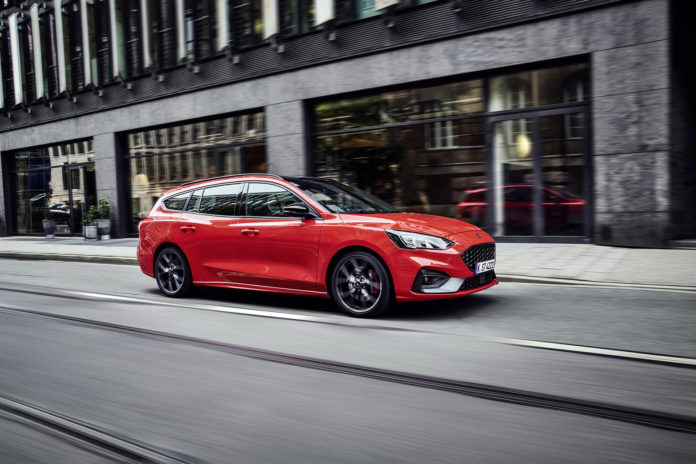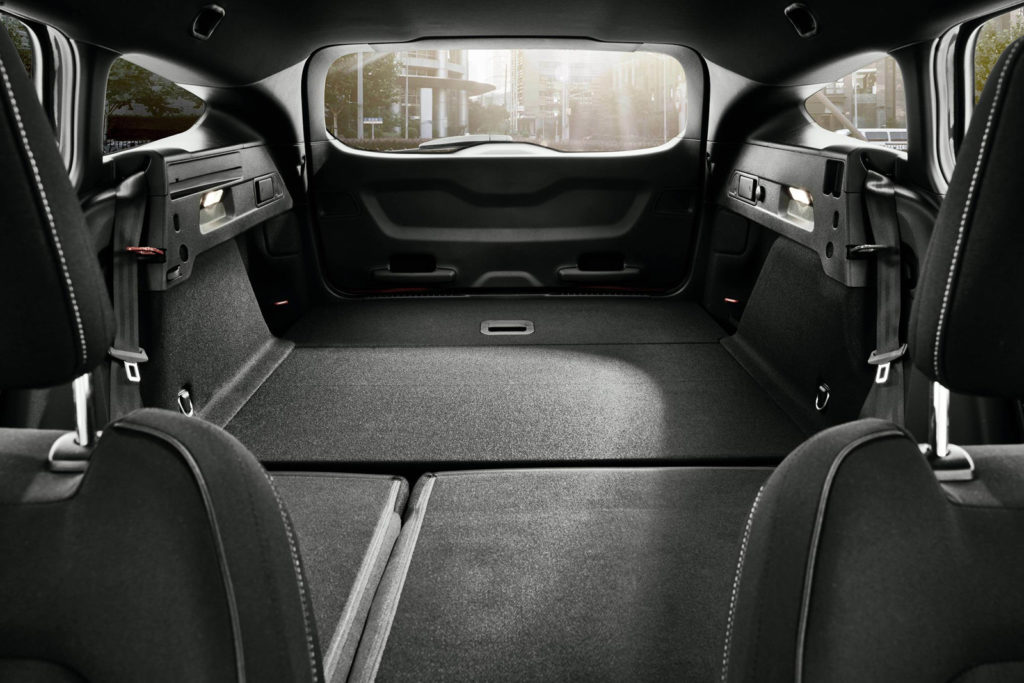
Ford has revealed the first images of the all-new Focus ST in wagon body style.
The Focus ST – developed by Ford Performance – goes on sale in the summer (arriving in Ireland in September) and is powered by a free-revving 280 PS 2.3-litre EcoBoost petrol engine with six-speed manual or seven-speed automatic transmission; or 190 PS 2.0-litre EcoBlue diesel engine with six-speed manual transmission.*
Advanced Focus ST sports technologies including an electronic limited-slip differential, rev-matching and selectable Drive Modes help blend track-day performance with everyday usability.

*Focus ST 2.3-litre EcoBoost petrol CO2 emissions from 179 g/km, fuel-efficiency from 7.9 l/100 km; 2.0‑litre EcoBlue diesel CO2 emissions 125 g/km, fuel-efficiency 4.8 l/100 km
The declared fuel/energy Consumptions, CO2 emissions and electric range are measured according to the technical requirements and specifications of the European Regulations (EC) 715/2007 and (EC) 692/2008 as last amended.
Fuel consumption and CO2 emissions are specified for a vehicle variant and not for a single car. The applied standard test procedure enables comparison between different vehicle types and different manufacturers.
In addition to the fuel-efficiency of a car, driving behaviour as well as other non-technical factors play a role in determining a car’s fuel/energy consumption, CO2 emissions and electric range. CO2 is the main greenhouse gas responsible for global warming.
Since 1 September 2017, certain new vehicles are being type-approved using the World Harmonised Light Vehicle Test Procedure (WLTP) according to (EU) 2017/1151 as last amended, which is a new, more realistic test procedure for measuring fuel consumption and CO2 emissions.
Since 1 September 2018 the WLTP has begun replacing the New European Drive Cycle (NEDC), which is the outgoing test procedure. During NEDC Phase-out, WLTP fuel consumption and CO2 emissions are being correlated back to NEDC.
There will be some variance to the previous fuel economy and emissions as some elements of the tests have altered i.e., the same car might have different fuel consumption and CO2 emissions.








